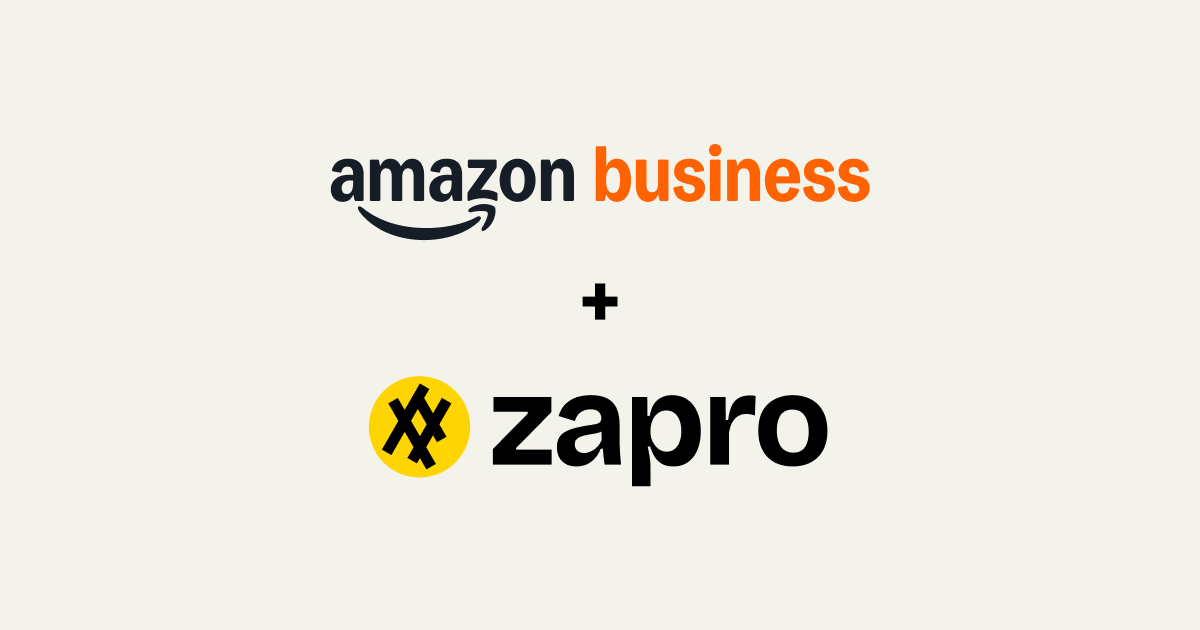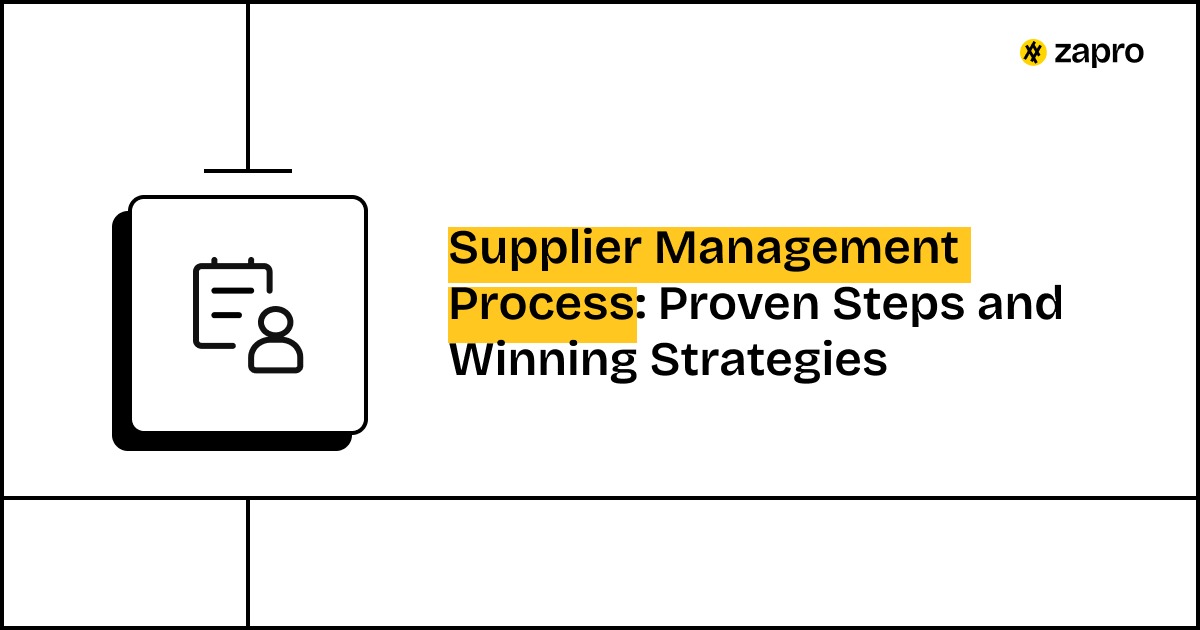Key takeaways
- The optimization of payment terms directly affects both working capital and supplier trust levels.
- Early payment and dynamic discounting programs generate financial advantages for both parties involved.
- The entire payment process becomes more efficient through automation and integration which eliminates all obstacles.
- Organizations must perform periodic policy assessments and analytics checks to maintain ongoing optimization.
- Zapro.ai provides businesses with advanced payment management solutions that deliver faster and more transparent payment processing.
The strategic importance of vendor payment terms
Vendor payment terms in contracts represent more than a simple financial clause because they demonstrate how businesses control their financial operations. The schedule of payment transactions affects both short-term liquidity management and supplier reliability maintenance. Strategic payment term management enables organizations to use these terms as an invisible tool for improving cash flow management and reducing risks while building better relationships with suppliers.
Organizations operating in competitive markets with unstable supply chains must adopt customized payment strategies instead of using standardized approaches. The correct payment system enables financial flexibility while keeping suppliers both motivated and dependable.
The analysis of payment term optimization requires understanding their complete financial effects which affect working capital and cash flow management and supplier relationship trust.
Impact on Working Capital and Cash Flow
The duration of supplier payment terms determines how long a business maintains liquidity because it determines when suppliers receive payment. The practice of extending payment terms to suppliers creates short-term liquidity benefits because it keeps funds within the business. The practice of extending payment terms without planning can create operational difficulties for suppliers which threatens their ability to deliver supplies.
Organizations achieve maximum efficiency from their money through proper payment term management. Organizations achieve three main benefits when they optimize their payment terms:
- Organizations can allocate their funds to support business expansion or debt repayment.
- The organization decreases its need for short-term funding sources.
- Organizations can obtain quantifiable savings through early payment discount programs.
Finance leaders who implement real-time visibility and automation systems can optimize payment timing to align with cash inflows and business objectives.
Balancing Financial Health with Supplier Trust
The optimization of cash flow requires organizations to maintain positive relationships with their suppliers. Suppliers need stable payment schedules to operate their businesses effectively because irregular or delayed payments create trust issues which lead to higher interest rates and potential loss of their business to other clients.
A payment strategy which benefits both parties requires organizations to find the optimal payment terms. The payment strategy includes two essential elements which are:
- The payment terms should reflect the supplier’s size and reliability level and contract value amount.
- The company provides flexible payment options through early payment programs and dynamic discounting systems.
- The organization should provide suppliers with detailed information about their payment procedures and any upcoming changes.
Companies that work together with suppliers to optimize payment terms develop better supplier relationships and gain improved negotiation power and more stable supply networks.
Common vendor payment terms and their implications
Organizations use payment terms to determine supplier payment schedules yet these terms have different levels of impact on business operations. The correct payment term structure enables better supplier relationships and better working capital management but incorrect terms create cash flow problems and damage business relationships. Knowledge of standard payment terms enables organizations to develop better negotiation strategies and achieve better results.
Net 30, Net 60, and beyond: understanding the standards
Vendor agreements commonly use payment term standards which include Net 30 and Net 45 and Net 60. The payment due date appears after a specific number of days from the invoice date according to these terms. The payment period for Net 30 terms requires suppliers to receive their payments within 30 days after receiving their invoice.
- The payment term of Net 30 applies to small businesses and fast-paced industries which have brief cash management periods.
- Large businesses commonly use Net 60 and Net 90 payment terms to maximize their working capital.
- The 2/10 Net 30 payment structure provides a 2% discount to buyers who make payments within 10 days from the invoice date.
The payment terms create significant financial effects for both buyers and suppliers. The payment period affects supplier cash flow but it reduces the amount of available funds for the buyer. The payment period affects supplier satisfaction and delivery speed when it extends beyond normal limits. The selection of payment terms should focus on matching financial targets with supplier operational capabilities.
The role of payment terms in supplier negotiations
The process of supplier negotiations heavily depends on payment terms which hold equal significance to price and quality and volume.
The selection of payment terms determines how suppliers will view your company because it establishes the foundation for future business relationships. The way suppliers view your company depends on your payment terms because they determine if you will be considered a reliable business partner or just a regular customer.
Payment term discussions between parties during negotiations help parties discover common business prospects. The supplier will consider longer payment periods when they receive early payment rewards through dynamic discounting programs.
- Buyers can provide shorter payment periods to suppliers when they want better prices and guaranteed delivery schedules.
- The implementation of flexible payment terms allows organizations to link their payment structures to performance indicators which include delivery timeliness and product quality standards.
Payment term negotiations succeed best when organizations use data to establish terms that benefit both parties. The understanding of cash flow needs between parties enables them to develop payment terms which support buyer liquidity and supplier delivery reliability for early payment discount programs and automated discounting systems.
Better Payment Terms. Stronger Vendor Relationships.

Technology’s role in modern payment term management
Modern finance teams depend on technological solutions to handle vendor payment terms with enhanced precision and speed. Businesses achieve better liquidity management through automated systems which also minimize human mistakes and build stronger relationships with their suppliers.
Organizations achieve better cash flow management and supplier satisfaction through data-driven payment tracking systems which enable proactive management of every financial transaction.
1. Automated payment scheduling and tracking
The process of tracking payment schedules through manual methods results in delayed payments and lost discount opportunities and damaged supplier relationships. Automated payment systems solve these problems through automated payment processing which follows established rules and approval procedures and monitors invoice status in real-time.
The system provides three essential benefits to users:
- The system delivers payments at the correct time which avoids both premature and delayed payments.
- The system automatically detects all possible early payment opportunities.
- The system provides complete payment cycle visibility to users who no longer need to search for paperwork.
The system automates payment processing which enables staff members to dedicate their time to developing strategic plans instead of performing repetitive tasks for payment tracking and reconciliation.
2. Integration with AP automation and ERP systems
Payment term management requires complete system integration to achieve its maximum potential. The integration of payment data with AP automation and ERP systems enables real-time synchronization between invoice approvals and cash flow forecasts and payment information.
Organizations achieve better results through system integration because they can:
- Enable direct invoice data transfer from procurement and accounting workflows.
- Gain instant access to all upcoming payment responsibilities.
- Obtain a unified, accurate understanding of their cash flow status throughout all departments.
The integration of systems enables finance leaders to make strategic payment release decisions through enhanced visibility and operational efficiency.
3. Analytics for identifying optimization opportunities
The main strength of technological systems emerges from their ability to discover valuable information which enables organizations to enhance their operations. Organizations can discover new cash flow optimization opportunities through analytics which analyzes payment patterns and supplier actions and discount usage statistics.
Businesses use data analytics to achieve two main objectives:
- The system enables users to evaluate supplier performance through comparison of different suppliers and product groups.
- The system enables users to locate suppliers who accept early payment programs and dynamic payment arrangements.
- The system enables users to forecast how payment term modifications will affect their working capital.
Payment term management through advanced Procurement Software platforms enables organizations to perform continuous optimization instead of performing a single setup.
Best practices for implementing payment term strategies
The successful implementation of payment terms depends equally on execution and team collaboration as it does on strategic design. The most successful finance teams view payment term optimization as an ongoing development process which maintains cash flow targets and supplier confidence and operational performance.
Organizations that want to establish successful payment term strategies should follow these established methods for implementation and maintenance.
1. Communicating with suppliers effectively
Effective supplier communication stands as the foundation for building strong business relationships with vendors.
Suppliers need to understand both the reasons and methods behind payment structure changes before organizations start implementing new payment systems or modifying current ones.
The following best practices should be followed when working with suppliers:
- Organizations should establish payment term discussions during both new contract establishment and existing contract renewal processes.
- The organization must distribute detailed payment guidelines together with step-by-step procedures for handling payment-related issues.
- The organization should establish flexible payment options which include early payment programs and dynamic discounting to create advantages for both parties.
- The organization should establish self-service Vendor Management Tools or portals which enable suppliers to check payment status and view invoices and discounts.
Businesses that maintain open communication with their suppliers will experience better collaboration and fewer disputes while building their reputation as trustworthy business partners.
2. Monitoring and adjusting payment policies
Payment term strategies need regular assessment to achieve their maximum potential. The system needs to receive data-based feedback for performance evaluation and strategic adjustments.
The finance and procurement teams need to:
- Use Procurement Software and AP automation systems to generate analytics which help organizations track discount usage and identify potential lost opportunities.
- Check supplier satisfaction levels together with their performance indicators at regular intervals.
- Modify payment terms according to supplier size and financial stability and operational importance.
- Schedule periodic payment policy reviews through established governance procedures to maintain alignment between payment terms and market conditions and liquidity targets.
Organizations that monitor their payment policies continuously achieve agility while maintaining competitive terms that benefit their suppliers.
3. Segmenting and standardizing terms
All suppliers need different treatment approaches. The organization can create specific payment plans for vendors through category-based and value-based and financial-strength-based segmentation.
- The organization should implement different payment strategies for its suppliers based on their strategic value and operational importance.
- The organization should establish standardized payment terms for each vendor segment to achieve fairness and maintain operational consistency and regulatory compliance.
4. Leveraging technology for collaboration
Technology enables better collaboration between organizations through its automated systems.
The integration of Procurement Tools with AP automation and ERP systems through platforms enables organizations to track policy compliance and make timely payments while improving communication between teams.
Suppliers who can monitor their payments in real-time become more likely to work with flexible payment arrangements which leads to better financial performance for all parties involved.
Smart payment term strategies become possible through Zapro.ai implementation
The process of optimizing vendor payment terms has evolved into a strategic decision which affects both operational cash flow and supplier relationships and business sustainability. The process of achieving this equilibrium through manual methods proves to be extremely challenging. The system needs technology support to achieve real-time monitoring and team collaboration and data-based optimization of payment terms.
That’s where Zapro.ai enters the picture.
Zapro.ai enables finance and procurement teams to automate payment term management while analyzing and optimizing all stages of the process which leads to financial strategy development from basic cash management.
Zapro brings the following advantages to users:
- The system uses automated payment scheduling to optimize payment releases at times which generate maximum value instead of following standard due dates.
- The system detects instant discount possibilities which it uses to perform automatic payment reductions to achieve maximum invoice value.
- The system operates as a single platform which enables users to link their AP automation systems with ERP and Procurement Software platforms for complete control over all financial activities.
- The system generates analytical reports which show users how to maximize their working capital and which suppliers need flexible payment terms and how payment policies affect their liquidity.
- The Vendor Management Tools of Zapro provide suppliers with clear views of their payment information and discount availability which builds trust and minimizes conflicts.
Zapro.ai enables organizations to transform vendor payment management into an optimized process which enhances cash flow and reveals savings opportunities while developing stable relationships with suppliers.
Ready to transform your vendor payment process?
Discover how Zapro.ai can help you turn payment terms into a competitive advantage — improving cash flow while keeping your suppliers happy.

Optimize Cash Flow Without Compromising Vendor Trust
Zapro optimizes payment schedules, captures early payment discounts, and strengthens vendor relationships with data-driven strategies.
Don’t miss our weekly updates
We’ll email you 1-3 times per week—and never share your information.

 Healthcare
Healthcare Financial Services
Financial Services Technology
Technology Venture Capitalist
Venture Capitalist Chief Procurement Officer
Chief Procurement Officer Chief Financial Officer
Chief Financial Officer





